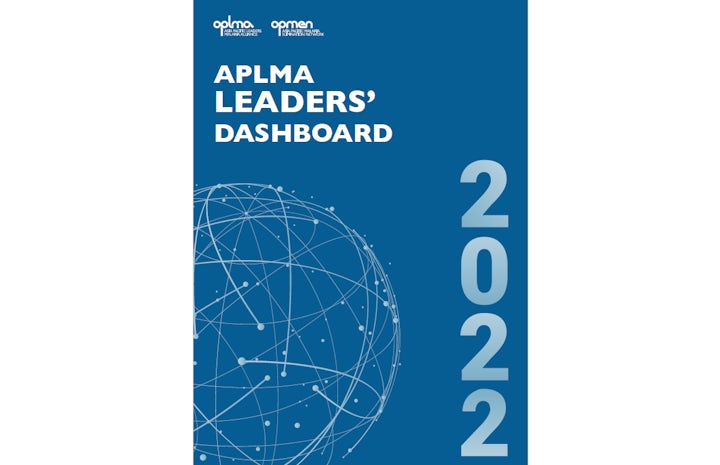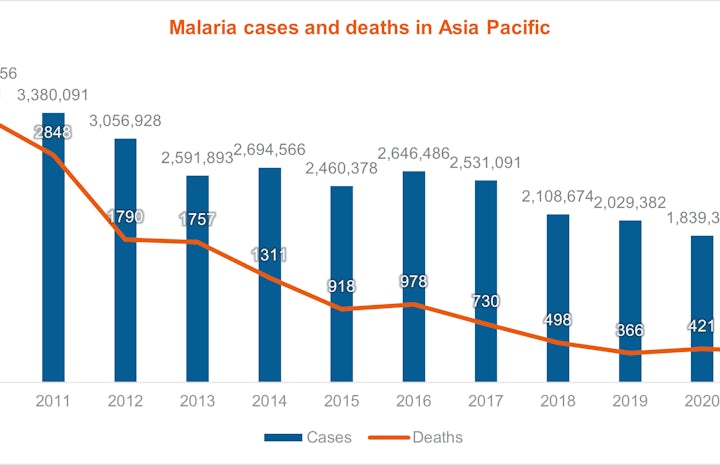APLMA Leaders' Dashboard 2022: Countries Show Modest Progress Against Malaria while Challenges Persist in High-Burden Geographies
by APLMA •

Photo credit: UNDP Sri Lanka 2023
Every year APLMA takes stock of progress made towards the 2030 goal through the Leaders’ Dashboard, which highlights key policy reforms undertaken by national programmes and reviews the changing malaria epidemiology landscape to inform decision-makers on what is needed to realize the elimination goal. The latest Leaders’ Dashboard 2022 shows most countries in the region sustained progress despite the second year of the COVID-19 pandemic, reporting a 2.5% drop in malaria cases between 2020 and 2021. Countries achieved this while improving malaria surveillance, adapting techniques to respond to the growing P. vivax burden, and tailoring responses to adequately protect at-risk populations.
Despite these efforts, the Leaders’ Dashboard 2022 also noted increased malaria cases in high-burden geographies such as Indonesia, Pakistan, Myanmar and Solomon Islands in 2021. The recent malaria outbreak in Pakistan caused by the floods is a reminder that the fight is not over and countries need to continue investing in malaria to maintain and accelerate efforts towards elimination.
Asia Pacific countries continue to progress malaria policies
Last year, six countries achieved nine new policy milestones. Surveillance was a high priority in 2022.
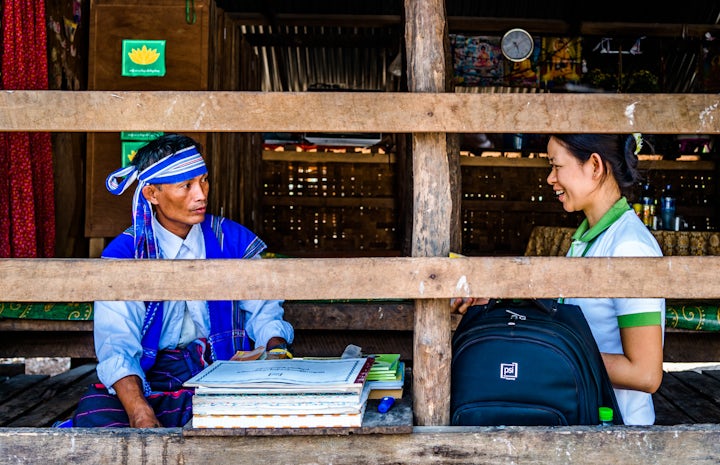
Last year, six countries achieved nine new policy milestones. Surveillance was a high priority in 2021. From launching legislation for notifying malaria to developing a financial sustainability plan beyond elimination, countries achieving these milestones are bringing the region closer to the elimination goal.
- Myanmar, Nepal and the Philippines mandated all cases of malaria to be notified within 24 hours to effectively prevent new outbreaks. This brings a total of 17 countries in the region who have made malaria a notifiable disease requiring case reporting within 24-48hrs.
- Bangladesh, India, Myanmar, Nepal and Papua New Guinea now have reporting systems in place to routinely report malaria case data from all providers including private facilities, bringing these countries one step closer to testing and treating every case everywhere. This is an important step particularly for countries that do not yet have malaria as a notifiable disease legislation.
- The Philippines successfully developed the Transition and Sustainability Plan as part of the latest National Strategic Plan for Control and Elimination Plan 2023-2028.
Asia Pacific countries embrace innovation
Beyond the policy milestones, countries in the region have also adopted innovative tools/approaches to accelerate towards elimination:
- Solomon Islands is targeting P. vivax diagnosis and treatment using G6PD Analyser- Biosensor.
- The Vivax Elimination Roadmap, developed in partnership with APMEN, was endorsed by all provinces in Pakistan.
- Indonesia is conducting mass drug administration for Mobile Migrant Population, Intermittent preventive treatment of malaria during pregnancy (IPTp) and forest-goers.
- Cambodia updated surveillance guidelines to reflect targeted drug administration and response by malaria rapid response teams.
- Bhutan made G6PD testing mandatory for P. vivax treatment as recommended by the WHO. Similarly, Viet Nam is rolling out G6PD testing in high endemic provinces.
New to the Leaders’ Dashboard 2022
In 2022, APLMA underwent consultation with national programmes and experts to refine three existing milestones to better reflect the progress made towards the elimination goal.
This includes status on certification processes adopted by countries, post-market surveillance of malaria commodities to maintain quality, and strategies for tackling imported cases of malaria. For more information, please access the online dashboard.
Asia Pacific making slower malaria elimination progress
Since 2010, the Asia Pacific region has made substantial progress, with an 88% decline in reported deaths and 64% in decline confirmed malaria cases. However, progress towards malaria elimination slowed down in 2021. Data from the Leaders’ Dashboard 2022 reinforced the WHO’s World Malaria Report 2022 findings that countries largely held the line against malaria, avoiding resurgence despite a modest increase in cases within pockets of the Asia Pacific region. Overall, the region reported a decline of 2.5% in confirmed 2021 malaria cases -- a much slower rate of progress as compared to the 10% decline reported in 2020. The malaria burden remains concentrated in six countries -- Papua New Guinea, Pakistan, Indonesia, India, Solomon Islands and Afghanistan -- contributing 95% of the total burden in the region.
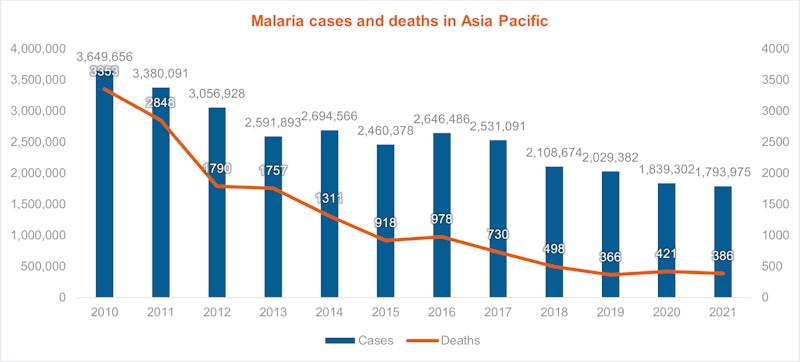
Other key highlights within the region include:
- Timor-Leste has returned to reporting zero indigenous case in 2021 after the outbreak experienced in 2020. The country is expected to submit for certification by the end of this year.
- Malaysia has reported zero indigenous non-zoonotic malaria cases since 2018. However, the country continues to face increasing cases of zoonotic malaria caused by P. knowlesi.
- 12 out of 18 malaria endemic countries in Asia Pacific reported a drop in cases in 2021 e.g., Cambodia (53%), India (13%) and Vanuatu (37%).
- Papua New Guinea, the highest burden country in the region, also reported a 13% decline in cases for the first time since the 2015 resurgence.
- Increase in malaria cases were reported in Indonesia (20%), Pakistan (7%), Myanmar (34%) and Solomon Islands (8%) in 2021.
Stagnation in progress is a major concern and a reminder that the last mile of elimination is the toughest.
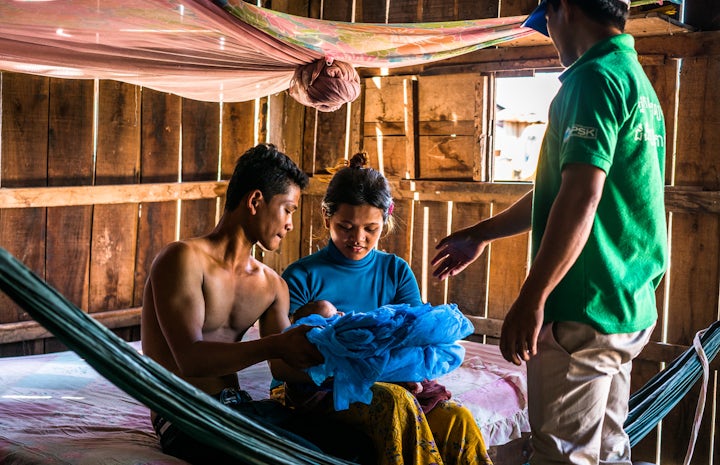
Stagnation in progress is a major concern and a reminder that the last mile of elimination is the toughest, particularly when remaining cases are occurring within international cross-border areas where vulnerable populations do not have reliable access to quality health services.
The initial trends on malaria incidences from 2022 also show an alarming jump in cases caused by natural disaster or political instability. The WHO Mekong Malaria Elimination Epidemiology Summaries for the GMS show a 57% increase in malaria cases in 2022 over 2021. These developments are mainly due to political instability in Myanmar disrupting malaria responses in Myanmar and near the Myanmar-Thailand border. Similarly, in Pakistan, a four-fold increase in malaria cases was reported after devastating floods in June 2022. Reduction in funding allocation from the Global Fund in their latest grant have also put malaria elimination progress at risk in Asia Pacific.
Continued investment is needed to maintain and accelerate efforts for elimination in Asia Pacific. There remains a persistent malaria funding gap in the region and greater domestic resource mobilization is required in face of declines in donor funding. The policy reforms and innovative approaches adopted by countries in the Leaders’ Dashboard 2022 show malaria elimination remains viable. With strong partnerships and commitment across all sectors from government, the private sector, civil society and communities, we can eliminate malaria from Asia Pacific.


